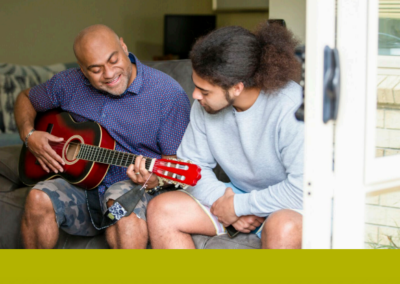Case Study_Monte Cecilia_FINAL

Building Better Homes, Towns and Cities National Science Challenge research led by Professor Errol Haarhoff is looking at whether living at higher density can strengthen communities and enhance liveability in new neighbourhoods.
While the research is ongoing, some interesting outcomes are already being discovered about the area, which is currently home to 4,000 residents but expected to grow to 10 – 12,000 residents in a few years time.
Researchers are currently analysing a resident questionnaire survey, which will be followed by focus group discussions. “There is a very strong appreciation of the large investments made in quality parks and public amenities,” explains Professor Haarhoff. “Indications are that respondents report that currently over 60% of schoolchildren walk or cycle to local schools.”
Building Better Homes, Towns and Cities are also conducting an analysis of a closed resident Facebook page. These include community notices about events within the neighbourhood, shared worries and concerns, lost and found, things to give away or borrow and engagements with what residents value about the place, such as ferry services, walkability, neighbourliness, and encounters with nature.
“The most frequent topics relate to what we see as community interactions. These need to be probed further, but it begins to suggest that beyond the construction of houses, there is an emerging a sense of community,” says Professor Haarhoff.
What’s interesting about this is the fact Hobsonville Point has a predominance of higher density housing, such as terrace houses and apartments.
It is this kind of housing that Auckland needs to build more of to contain urban sprawl and ensure the city can run more efficiently. But it’s very different from the house on the “quarter-acre” section with the large backyard that, until now, has been the Kiwi dream
Building Better Homes, Towns and Cities research is vital to understanding the benefits of different housing to urban growth.
“It looks and feels very different from a conventional suburb,” explains Dr Haarhoff.
Building Better Homes, Towns and Cities research also indicates that people make trade-offs between complex factors when choosing where to live. Two big drivers include living in neighbourhoods that are close to public transport and where you can walk to local amenities.
“What these finding demonstrate is that people are prepared to live at higher density if the neighbourhood offers a rich array of amenities, such as parks, playgrounds, cafes, and so on. In a way this way compensates for the loss of a backyard and is replaced by well designed and safe and public spaces that have a high degree of walkability.”
Although new research outcomes will continue to be delivered by Building Better Homes Towns and Cities throughout the year, for now, it’s clear that living at density has huge potential.
“While we know every community is different,” says Dr Harhoff, “what we are aiming to discover is to see if this is a model and precedent that could be applied successfully elsewhere.”
About Building Better Homes, Towns and Cities
Building Better Homes, Towns and Cities (BBHTC) is one of 11 National Science Challenges, funded by the Ministry of Business, Innovation and Enterprise (MBIE). BBHTC undertakes world-class research to shape New Zealand’s built environment and strengthen communities. The Challenge develops findings that will empower public, planners and policymakers with reliable information and new tools for fresh thinking and better decisions. The Challenge is discovering new pathways to address the long-standing housing challenges of our most disadvantaged and to support Māori into healthy homes.
Read the story on Scoop here.
Community Housing Aotearoa - Newsletter 3 June 2025
Community Housing Aotearoa_Media Release_Unlocking affordability key to ending homelessness_2025
Westpac NZ And Community Housing Aotearoa Announce New Partnership